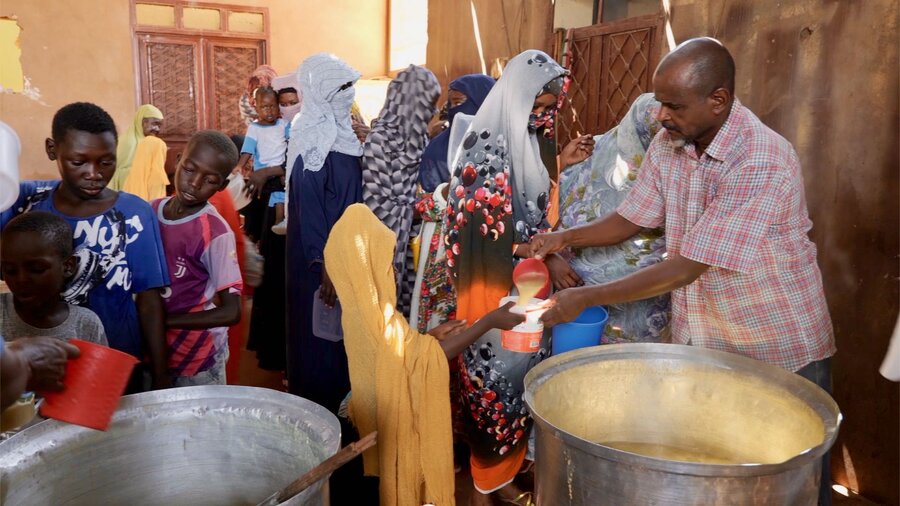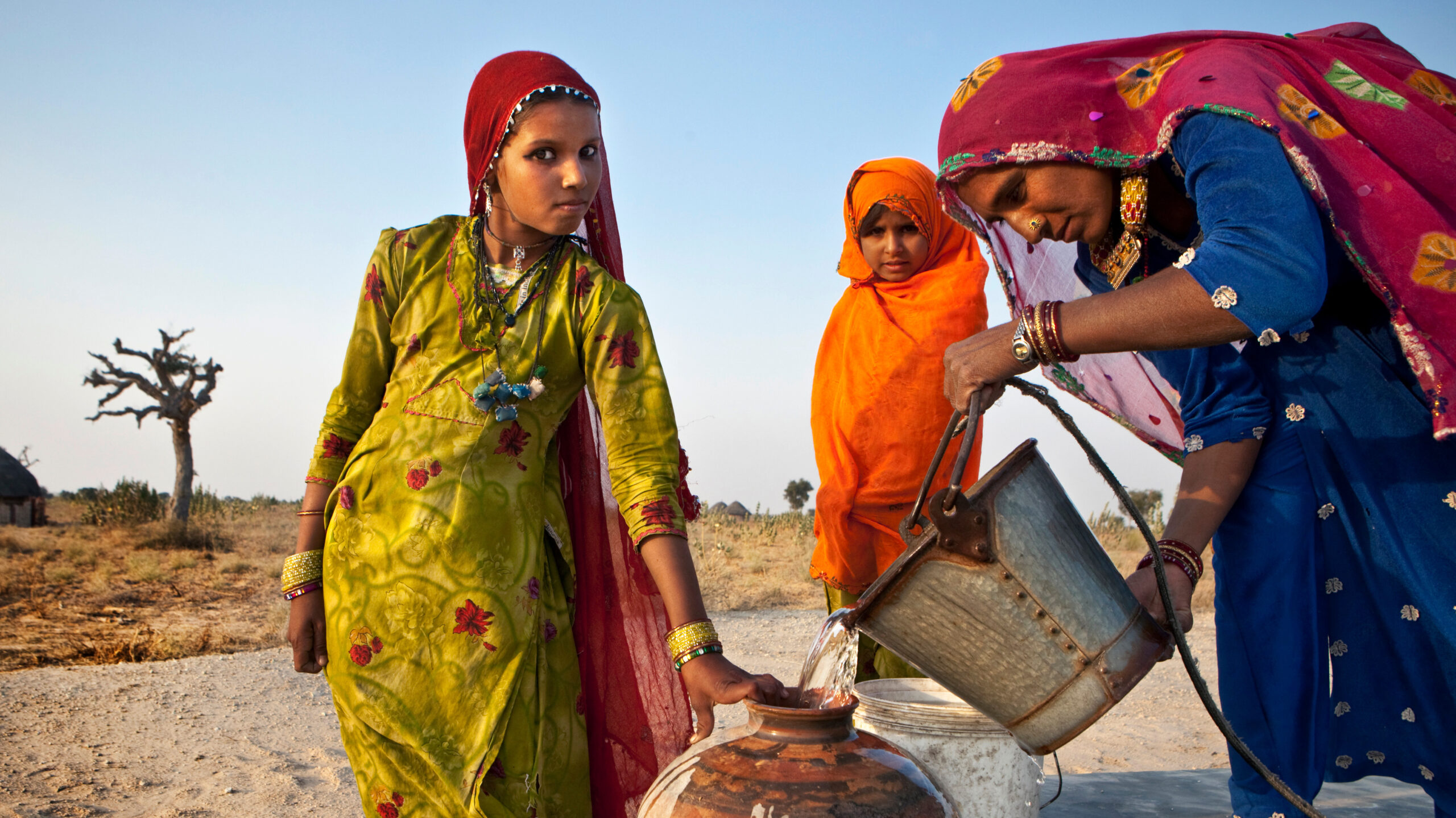More than a year of conflict between the Sudanese Armed Forces and the Rapid Support Forces has weakened the country’s fragile economy. This is in addition to triggering a humanitarian crisis, loss of lives, property destruction and income disruptions.
Even before the current conflict, Sudan ranked among the poorest countries in the world. The proportion of those without access to basic necessities such as education, healthcare and proper living conditions was estimated at 52.3% of the population.
The economy heavily depends on agriculture. The sector’s productivity has been low because of traditional pastoral systems and limited mechanization. The armed conflict has damaged infrastructure and disrupted agricultural services and industries. Production of major food security crops like sorghum and millet has fallen 42% and 64% due to shortages of electricity, fuel, improved seeds, fertilizers and financing. The livestock market has struggled with disrupted trade routes. Manufacturers, especially agro-processing firms, have closed temporarily or permanently.
Gold mining and oil production have been affected. The banking sector has faced significant challenges, with electronic payment services hindered. Health services are in crisis, with 75% of health centers in conflict zones closed. And the education sector has halted, preventing 19 million children from attending school.
Despite this stark reality, there is a potential path forward for Sudan. With vast arable land and the possibility for increased productivity through modernization and improved practices, agriculture could be the way to economic recovery. Targeted interventions and support, as well as rebuilding infrastructure, can address various challenges.
Sudan’s economy is an important part of our shared research interests. How and when Sudan will begin its recovery is a question that has been at the forefront of our work.
The study on which our analysis is based investigates the impact of the conflict on the economy, poverty and undernourishment, using an economy-wide model. This model allows for in-depth analysis at national and household levels. It then recommends ways to mitigate these impacts of the conflict, with a focus on the role of the agricultural sector.
Overall, our study revealed that targeted interventions in agricultural productivity, combined with strategic infrastructure investments and robust social protection measures, can alter the post-conflict recovery trajectory if a peaceful settlement is reached before the end of 2024. These interventions not only promise to lift millions out of poverty but also stimulate economic activity across sectors.
Estimation of the economic impact until 2028
The Rural Investment and Policy Analysis system is a tool used by IFPRI to study and simulate future directions of the economy of a country. It helps test different policies, investments and economic changes to see their possible effects. The institute started to develop and use this tool in 2016 to conduct assessments around the world.
Our analysis using the model covered the period between 2023 and 2028. It was based on World Bank and International Monetary Fund (IMF) projections of growth in the country’s gross domestic product (GDP) from 2023 through 2028.
Two scenarios emerged from the study: moderate decline with slow recovery; and sharp decline with rapid recovery.
- 1. Moderate decline with slow recovery: Based on the World Bank estimates, the Sudanese economy contracted by 12% in 2023. In this scenario it will reduce by 3.7% in 2024 and 0.7% in 2025. The agricultural sector, although hit with a 7.9% contraction in 2023, declines by only 2% in 2024 and rebounds to 1.1% growth in 2025. The industrial sector sector shrank by 11.6% in 2023 and needs a longer recovery period. No growth is projected until 2026. The services sector also struggles, contracting by 16% in 2023. Recovery begins in 2026 at a growth rate of 1.6%.
- 2. Sharp decline with rapid recovery: According to IMF estimates, the GDP fell by 18% in 2023. A positive shift is expected in 2024 with modest growth of 0.3%, strengthening to 7.0% in 2025 and continuing with 4.7% and 4.5% in the following years.
Each of these scenarios has implications for living conditions, particularly poverty and undernourishment rates. These are important measures because they show how economic changes affect people’s lives and overall well-being. By understanding these impacts, we can create targeted plans to reduce negative effects and better support vulnerable communities.
Both scenarios present an increase in poverty and undernourishment rates. Millions more people are expected to fall below the poverty line. The moderate reduction scenario estimates that 2.7 million people fall into poverty in 2023. The sharp reduction scenario suggests this number could be as high as 3.9 million.
Another important indicator is consumption: how much households are spending on goods and services. It reflects living standards and economic stability of households. The conflict has reduced consumption across all household groups in 2023 compared to its level before the conflict.
Note that the 2023 GDP contraction estimates underpinning the two scenarios are much lower than other estimates. The Ministry of Finance and Economic Planning in Sudan, for example, estimates contraction exceeding 40%. This indicates a higher likelihood of severe economic consequences, including increased poverty and undernourishment.
Pathways for recovery
Various scenarios have been developed to explore how Sudan’s economy can recover. They are based on agricultural productivity rising, and a flow of external assistance of $1 billion. There are four recovery scenarios:
- 1. Agricultural bounce-back scenario: Assumes agricultural productivity will recover to its pre-conflict levels by 2026. In Sudan, the agricultural sector has great potential for leading recovery after conflict. Agriculture could sustain the recovery, as most of the conflict and armed clashes occur in urban areas.
- 2. Infrastructure investment scenario: Outlines an investment of $1 billion in infrastructure, paid out over three years: 20% in 2024, 40% in 2025, and 40% in 2026. This is on top of an agricultural bounce-back. In these scenarios, it is assumed that these grants are mostly invested in rehabilitation, infrastructure development, and essential services such as electricity and water supply.
- 3. Cash transfers scenario: Proposes the distribution of $1 billion in direct cash transfers. Most (80%) would be in 2024, followed by 20% in 2026, on top of an agricultural productivity recovery. This scenario assumes that direct financial support to households can immediately alleviate poverty and stimulate consumer spending.
- 4. Combined scenario of cash and infrastructure investment: Combines elements of the previous two external grants strategies, with 25% of funds ($1 billion) allocated to direct cash transfers and 75% to infrastructure investment, in addition to the agricultural bounce-back scenario.
The recovery scenarios show varying degrees of economic growth. The agricultural bounce-back scenario estimates growth of 0.2% in 2024, increasing to 4.4% by 2028.
Combining infrastructure investment with agricultural recovery shows an initial growth rate lower than that of the cash transfers scenario in 2024. But then it achieves growth of 4.5% by 2027. This underscores the impact of infrastructure development on economic growth.
The cash transfers scenario leads to the quickest impact, with a 0.8% growth rate in 2025. This suggests that immediate financial support can provide a short-term economic boost. But it has the same impact as the agricultural bounce-back scenario in 2028 (4.4% growth rate).
In all scenarios, poverty would be lower than if nothing was done. This demonstrates the potential of targeted interventions to cushion the adverse impacts of the conflict. It also underscores the urgency of securing peace and order.
Khalid Siddig is a Senior Research Fellow with IFPRI’s Development Strategies and Governance (DSG) Unit and Leader of IFPRI’s Sudan Strategy Support Program; James Thurlow is Director of IFPRI’s Foresight and Policy Modeling (FPM) Unit; Josée Randriamamonjy is an FPM Senior Scientist; Mariam Raouf is a DSG Senior Research Associate; Mosab Ahmed is a DSG Senior Research Assistant. This post first appeared on The Conversation. It is based on research that is not yet peer-reviewed. Opinions are the authors’.







